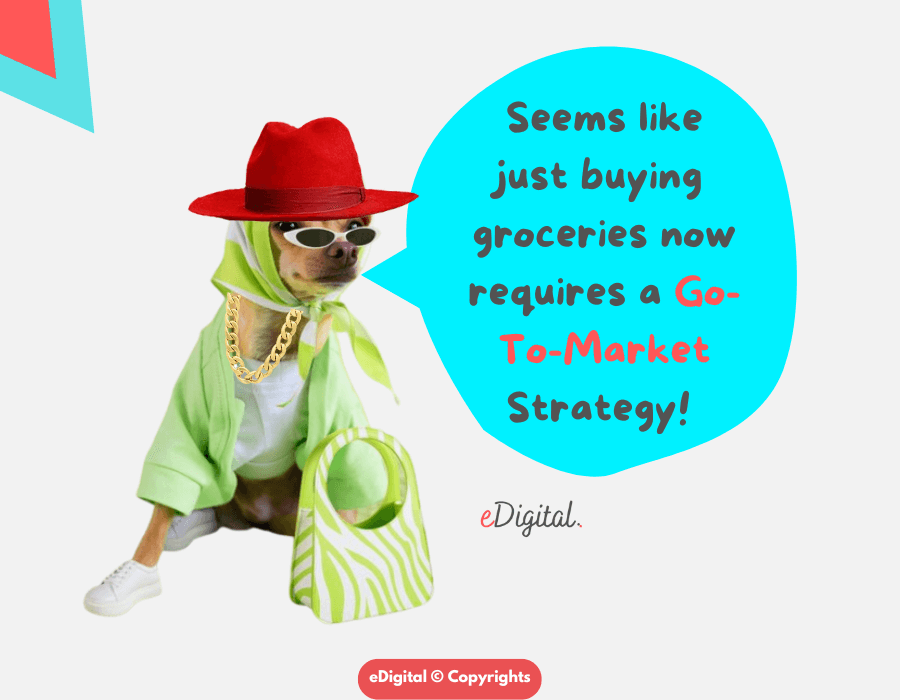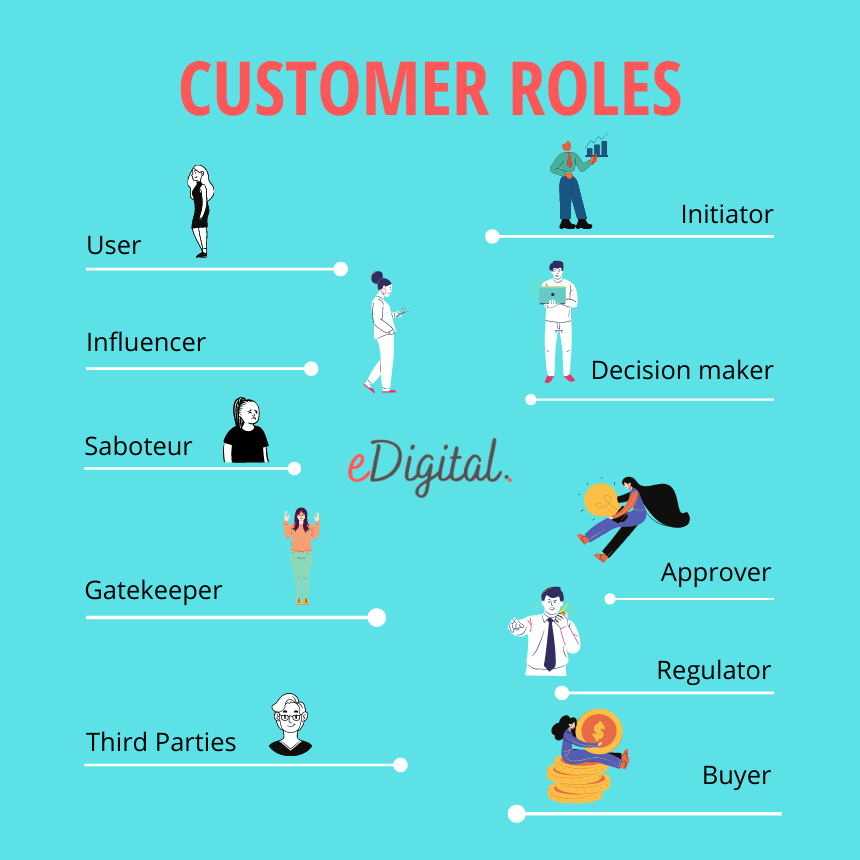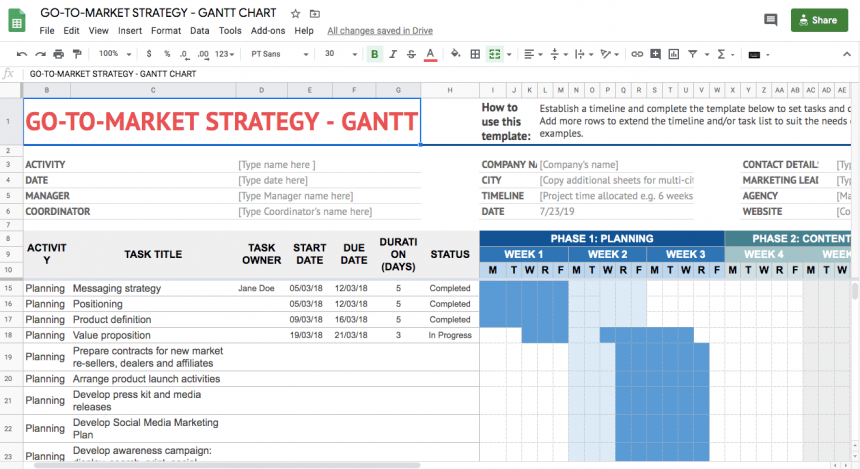THE BEST GO-TO-MARKET STRATEGY PLAN TEMPLATE AND FRAMEWORK IN 2025
The best Go-To-Market Strategy Plan template in 2025 and framework in Google Slides or use it as a Word doc, PDF or PPT file. The top premium Go-T0-Market Strategy Plan template used by Product Marketing Managers (PMM’s).
By Mau, Global Head of Marketing Strategy at eDigital.
Hundreds of marketers, startups and entrepreneurs are using this best “Go To Market Strategy Plan“ template and framework to double & triple their first-year revenues!
THE BEST GO-TO-MARKET STRATEGY PLAN TEMPLATE AND FRAMEWORK IN 2025
Mckinsey and HBR are some of the top global business consulting firms famous for designing some of the best Go-To-Market Strategies and helping their startups and enterprise clients successfully launch products and services into new markets.
Hubspot and SalesForce have also been offering tips on GTM (Go to Market) strategies, helping sales and marketing leaders in both startups and mature companies succeed when launching brands into new markets.
We have compared all these Go-To-Market strategy templates and with the help of Mau, (our Global Head of Strategy) come up with this premium and exclusive Go-To-Market Strategy plan template.
What is a Go-To-Market Strategy?
Whether you are using the “Diffusion of Innovation” curve, mapping out your “Customer Life Cycle Stages” framework or another marketing strategy framework or nothing at all; a Go-to-market strategy plan should be part of your marketing strategy when launching new products or launching existing products into new markets for both startups and mature businesses.
A great Go-To-Market strategy plan maps out:
- The new market opportunity (gap in the market)
- Need or problem in a new market (customer need or desire)
- The proposed solution (exact product or service)
- Price (how much your most valuable audience should be paying for it)
- How the product will be distributed to the end consumer (delivery)
There are myriad ways you can take your products or services to a new market and you need to decide which is best for your business.
A properly crafted and carefully curated GTM strategy delivers actionable answers to some marketing strategic questions, including:
- How do we find our most profitable customers?
- What’s the most effective method for engaging them?
- How can we achieve this at the lowest possible cost/risk?
- How do our most profitable customers want to buy from us? Is the first touch via phone, outside sales (in-person visits) or online or strictly by phone? How does our competition reach these customers? Is there a new way to reach them that our competition isn’t using?
You should determine the best possible combination of communication strategies that work with your most profitable customers.
It’s painfully expensive and time-consuming to determine all the different ways your customers want to be contacted. There are various ways with varying levels of costs, so do your homework to understand which methods are best.
Here are some of the go-to-market components you need to review to build a sound strategy:
- Field sales
- Inside sales
- Online
- Channel partners
- Resellers
What are your competitors doing and not doing? Do you see an opportunity the others don’t? Can you learn from how another industry handles sales?
- How to identify the size and structure of the new market including the estimated number of potential customers before expanding to the new market.
- What is the current consumer environment (brand preferences, trends and opportunities) in a new market that a specific product or service can monetise from?
- How will you offer a compelling unique value proposition?
- What is the best pricing strategy to attract the most valuable consumers in a new market?
- What are the key major competitors, their product offerings and their performance in the proposed new market? and how to devise a differentiation strategy.
- How will you connect with potential clients in a new market? Read the “Buying Centre” below.
- What are the latest economical, social, environmental and technological developments generating favourable market access opportunities?
- How will you deliver on what you’ve promised?
You often hear that go-to-market strategies are crucial for new product launches, but they are also used for businesses offering services as well.
Go-to-market strategies also help get your entire team on the same page with details and timelines to explain where your resources will be used. A go-to-market strategy is even more important when you manage remote teams because they ensure that communication is strong and execution is smooth.
The top reasons for a winning Go-To-Market strategy
Both startups and large companies can insanely fail if a well-crafted Go-to-Market strategy is not put in place.
A great example of a large company failing to apply a successful “Go-to-Market” Strategy is the resource planning software company: SAP.
SAP did not realise the importance of cloud computing until they were losing a massive set of customers and finally in Oct 2020 announced they were moving to the cloud. This failure to adapt cost them USD$38 billion in market cap.
You may say this is a fundamental product development issue and it is, but it should have also been picked up by a successful Go-to-Market Strategy many years ago.

Buying groceries requires a go-to-market strategy – funny dog
Writing the best Go-To-Market strategy plan – Steps
Inspired by the great work done by Mckinsey and HBR (global business consulting firms) Your GTM plan may include a Market Opportunity Analysis Report written by a marketing research firm.
A Market Opportunity Analysis may include:
- Expert interviews. You should run expert interviews with market access experts, business executives, strategy managers, and industry leaders to help a business gain an in-depth analysis of qualified opportunities in the new proposed market.
- Opportunity analysis. A detailed addressable market opportunity analysis of each down-selected best-fit opportunity in terms of market attractiveness, competitive factors, and end-user preferences. As a part of the market opportunity analysis, it is important to gather in-depth insight into the competitive landscape, potential customers, as well as the size and structure of the market. Besides, some marketers assess market access-related challenges to devise a robust go-to-market strategy.
- End-user interviews to select the most attractive market segments (most valuable customer segments – picking the most profitable niches), what messages may resonate with them, how to reach out to them in places they spend their time and how these most valuable potential customer segments understand what the brand is, why it’s important, and how it will benefit them.
⭐️⭐️⭐️⭐️⭐️ Job done!
We quickly needed to present our Go-To-Market strategy for a new “software” product we are launching and found this template very useful.
Dom T. ✅ Verified purchaser
Go-To-Market Strategy Plan – Inclusions
Your Go-To-Market strategy plan should include:
- Pick your most profitable niche. You know you have the best go-to-market strategy when you want to solve one single and painful need in a very profitable industry or vertical.
- Profile your target client/customer. You should include a brief description of the different types of customers involved and determine the role a given target stakeholder plays in the process. There are some useful prospecting tools. However, knowing someone’s job title in a certain industry is only one part, the other part is the role they play in the ultimate decision to buy your products or services. According to Harvard Business Review, on average, there are six decision-makers for every sale who have a say in whether a product is purchased. These people make up what is called the “buying centre”. The roles are as follows (though it’s important to note some job titles might occupy more than one role):
-
- Initiator: Starts the buying process or shows initial interest
- User: Uses your product regularly
- Influencer: Convinces others the product is needed
- Decision maker: Gives final approval for the purchase
- Buyer: Owns the budget
- Approver: Final approver who pushes the initiative on a larger scale (typically someone in the C-suite)
- Gatekeeper: Blocker in getting a product implemented or approved
- Saboteur: Goes out of their way to prevent buying your product or service
- Regulators: People who make the rules
- Third parties: Intermediaries, like insurers, PBMs or others who play a role in the decision

buying centre customer roles graph b2b
- Value matrix. Craft your value matrix against each client/customer type. Create a strategy to craft a personalised value proposition describing the benefits, expected gains and pain relievers they demand.
- Brand positioning. Position your brand in the marketplace by including key messages (service offerings), promotions and pricing. Evaluate your ideas against your competitors and find creative ways to communicate your brand’s value and stand out.
- Pricing strategy. Choose a price that’s both in line with consumer expectations and realistic for your business goals.
- Sales model. Options include the self-service model, field-sales model and channel model (Inc affiliates).
- Sales and marketing plan execution. Includes all your inbound and outbound strategies. Inbound strategies include website content, key landing pages, social media and online ads. Outbound strategies include cold calling, email marketing to potential clients and industry conferences.
- Lead funnel optimisation. Draft all possible buyer’s journeys and tie your marketing to support them in their journey with your brand.
Extra tips:
- Get everyone on the same page. Share key go-to-market strategy points with other customer-facing departments so they can get training or prep scripts accordingly.
- Solidify your budget not only for the initial new market launch but also for ongoing outreach.
- Evaluate the volume and quality of your new leads. Take some time to convert existing customers.
- Increase engagement through social media or any other relevant marketing channel.
- Reevaluate positioning and cut out low ROI marketing or sales activities to streamline spending.
- Check-in at regular intervals to see if everyone is still on the same page and to compare your goals to your new market penetration progress.
How to structure a winning Go-To-Market Strategy
A successful go-to-market strategy that can turn your new market idea into a successful venture both for existing businesses or start-ups.
“Most angel investors and/or VCs only review go-to-market strategies that are clear on demonstrating the specific value proposition the new start-up can offer to a specific customer segment. It is imperative you present a winning presentation”
Mau, a Senior Global Head of Strategist at eDigital
Whether you are starting a new small business or a solid start-up, the principles for creating a winning go-to-market strategy are the same. Get your customisable Go To Market Strategy Plan Template and open the doors to a fantastic start to your new venture!
Look for the right outcomes
A successful GTM Strategy plan should offer you insights on:
- Potential barriers to market entry.
- Distribution channels analysis.
- Assess the market’s readiness for new offerings.
- A go-to-market action plan to establish operations in the new market.
- Understand the most attractive opportunities and best fit for your strategic imperative.
- Develop a go-to-market and target company acquisition action plan (if needed)
- Identify suitable partners to support their operations in the new market
- Develop informed pricing strategies for your brands in the new market
- Understand the current and future adoption scenarios of your industry in the new market
- Get a deeper understanding of the needs and behaviour of the most valuable segments in the new market.
About this premium Go-To-Market strategy plan template
Find below the sections on this top Go-To-Market strategy plan template.
Sections
- Business Summary
- Overview
- The Problem
- The Solution
- Opportunity and Market
- Technology and Processes
- Competitive Advantages
- Competitive Landscape
- Go to Market Strategy
- Marketing & Sales Plan
- Financial RoadMap
- The Team
- Current Status
- Funding Target
- Summary
- Questions
- Next
- Contact
- FAQ
Bonus
- When you buy this template you will also get our Go-to-Market Strategy Gantt Chart template ready on Google Sheets so you can track all your activities in one collaborative sheet.

Go-to-market Strategy Plan Gantt Chart template
Successful Go-To-Market Strategy plan presentations use Google Slides.
Ensure all recipients can easily open and access your Go to Market Strategy Plan template.
Google Slides presentations are fast and easy to access and most angel investors and venture capitalists are familiar with Google Slides.
You can create a great first impression by offering your Go To Market Strategy Presentation in a format that is easy for potential investors to receive, open and pass to other stakeholders.
Top benefits of using Google Slides for your Go to Market Strategy Presentation:
- Access your “Go to Market Strategy“ Presentation from anywhere in the World. Just log in to your Google account.
- Send just a link to your Go to Market Strategy Presentation, instead of sending a heavy presentation attached to an email. Sometimes presentations with heavy images affect deliverability and recipients will not receive your Go to Market Strategy Presentation.
- Google Slides offers hundreds of very useful add-ons such as Unsplash (stock photography) and others.
- Have only one master “Go to Market Strategy” template on Google Slides and replicate your basic presentation template for other potential investors.
- Google Slides presentations are fantastic for cross-team collaborations as you can grant access to key stakeholders who need input into your presentation ie. venture co-founders, Chief Operation Officers, Marketing Managers, CEOs, etc.
- Need your Go To Market Strategy Presentation on PowerPoint? Easy! it takes two seconds to save your Google Slide Presentation as a PowerPoint file or PDF 🙂
Last Tip: some investment deals and decisions are taken by mutual agreement of different stakeholders so you need to also ensure your Go-To-Market Strategy Presentation looks nice even if it is printed in black and white.
⭐️⭐️⭐️⭐️⭐️ Save me time
A well-structured, intuitive template. I did not want to start from scratch. This template saved me hours of painful guesswork.
Josh G. ✅ Verified purchaser
How to get this premium template
- Once you complete payment, please click on the “Return to merchant” link. You will be taken to the page where you will find your template.
- You can always contact us if you need support.
Before you enter a new market with your brand, it is important to define your sales forecasting technique. You want to make sure you have a way to predict your sales in the new market.
One of the most popular methodologies is Marketing Mix Modelling.
You will need the right, accurate and granular inputs for the model to better help you predict sales.
eDigital strategists can help you design your Marketing Mix Modelling strategy.
Last tip: Early Concept Screen tools will help you determine which innovations are worth prioritising and provide clear guidance on which Go-To-Market path is best from a long-sustained launch to a short-term uplift.
If you need a market research firm to provide a “Market Analysis” report, you can hire some of these best market research companies.
Conclusion
Implementing a Successful Go-To-Market strategy is more important than ever before, and the best way for companies to succeed with their Go-To-Market strategies is by generating actionable consumer insights, through a mixture of market research and data analysis – ideally led by the vision, experience and expertise of Consumer Insights professionals or Marketers with a strong background in consumer insights.
Final note: Are your marketing costs through the roof?
If your customer acquisition costs are climbing faster than a startup founder’s ego (after a successful IPO), and you’re hooked on paid ads like a reality TV star drama or a Tinder date who keeps accepting your dinner invites but never calls you back.
If that sounds like your situation, you should contact us.
Our exclusive digital marketing strategy workshops will mercilessly dissect your marketing, expose all the weak spots, and show you how to ditch the social media algorithms chokehold and build a marketing engine you actually own.
We’ll shake up your team’s thinking, drop fresh ideas and turn your marketing from “meh” to money-making.
Ready to stop burning cash and start making it? Hit us up! We offer:
🔥 Digital Marketing Strategy. Because hope is not a plan.
🔥 Online Ads (Google, Social, Remarketing). The art of spending money wisely for once.
🔥 Social Media Marketing Training. So you stop posting into the void.
🔥 SEO Strategy & Execution. Because if Google doesn’t know you exist, do you even?
🔥 Influencer & Celebrity Marketing. Get people with clout to talk about you.
🔥 Branding & Logo Design. So you don’t look like a dodgy side hustle.
🔥 Consumer Giveaways & Competitions. Because people will do anything for free stuff.
🔥 Email Marketing & Drip Sequences. Slide into inboxes the right way.
🔥 Conversion Rate Optimisation. Turn window shoppers into actual buyers.
Ready to start marketing like a boss? let’s talk. 🚀
THE BEST “GO TO MARKET STRATEGY” PLAN TEMPLATE AND FRAMEWORK IN 2025
Considered one of the best marketing consultants in Sydney (and not just by Mau’s mom), Mau delivers killer digital marketing strategy workshops and best social media training so good, even your grandpa will get it.
5k+ smart marketers who love stealing good ideas receive Mau’s weekly email, while others tired of guessing use Mau’s Digital Marketing Plan and Social Media Plan templates.
Mau is travelling the 🌎 ✈️ probably posting questionable travel choices on TikTok or YouTube




